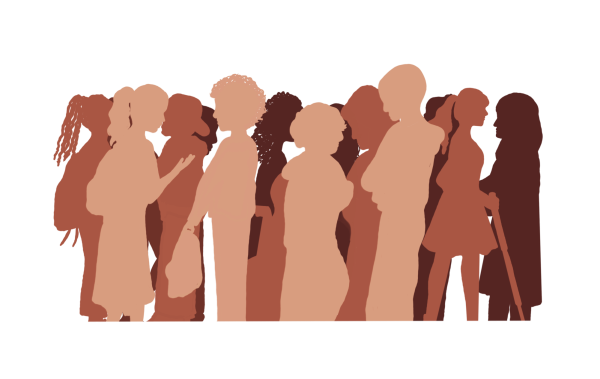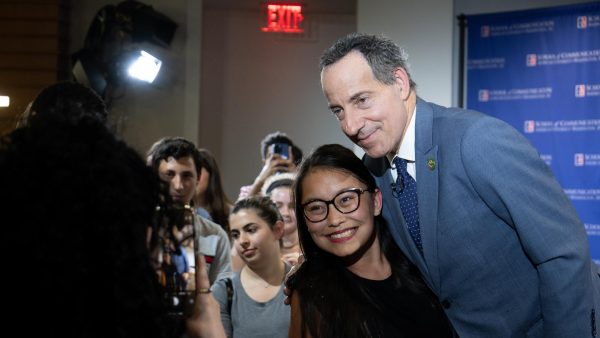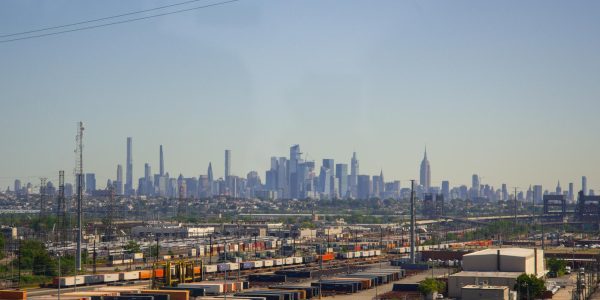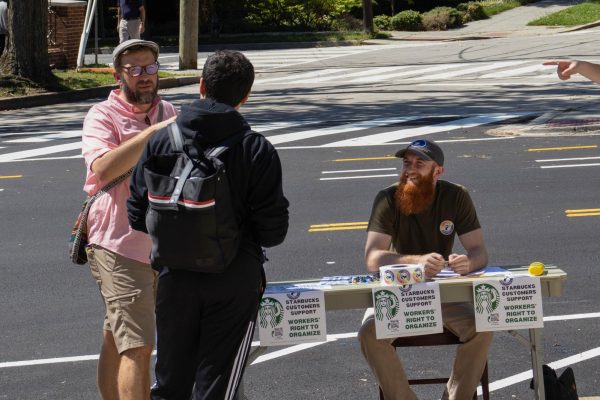Expect Resistance: Protesting in Trump’s America
Originally published in Spring 2017, Issue 21.
Photographed by Melany Rochester
In the midst of a dense sea of knitted, pink, pussy hats that flowed down Independence Avenue, messages like “Respect Existence or Expect Resistance” or “Women’s Rights are Human Rights” were written on sign after sign.
A heartfelt and harmonic cry could be heard all the way from the Capitol to the National Museum of the American Indian and far beyond in the early afternoon of Jan. 21, 2017. In her ancient native American language, artist and activist Jennifer Kreisberg opened the Women’s March, rallying the crowd with her “fierce vocals.” The haunting war cry and echoing drums moved the once fiery crowd to silence. The march had begun.
The New York Times estimates that at least 470,000 people attended the Women’s March the day after President Trump was inaugurated. Additionally, the paper reported that the Women’s March drew three times as many people as Trump’s inauguration.
The Women’s March is one example of a new kind of protest — it’s part of a transnational movement that uses social media to bring people to the streets and further discussions about inequalities. This is not to discount critiques of the Women’s March, from being ableist- discrimination against those with disabilities and drowning out people of color. But it does speak to a new kind of protest.
Protests, past and present
Thomas B. Edsall, a political journalist and author, says the protests that defined much of the 1960s and 1970s — civil rights, gay rights and opposition to the Vietnam War differed greatly from today’s protests.
He sees the divide between historic, organized efforts and more recent social media advocacy, as having different end goals. The protests of the past were focused on gaining new rights while the protests of today are mostly focused on the restoration of those rights and protections.
“They’re two different entities,” Edsall said.
Three recent movements come to mind in this cross examination: the Women’s March, Occupy Wall Street and Black Lives Matter.
The Women’s March took place largely to affirm women’s rights, and in particular, to assure that women have the right to control their own bodies — including the right to have an abortion. People marched against the threat of the Trump’s administration reducing women’s access to good health care. Though this in some ways proved retroactive as critics surfaced claiming the march was too centered on women’s reproductive organs due to the overwhelming “pussy” rhetoric.
Occupy Wall Street started in September 2011 to protest the weakening and repealing of regulations, like the Glass-Steagall Act under Roosevelt. The act protected the market against transnational corporations and huge mergers of investment and commercial banks.
Black Lives Matter was created in 2012 in response to the death of Trayvon Martin. The movement is a call to attention and a response to racism in the U.S. Their website reads that they are “working to (re)build the Black liberation movement.” It’s a call to show that the claim ‘racism no longer exists in America’ is a myth. Black Lives Matter believes that if America is ever to define itself as a non-racist country, then the first step is to stop portraying America as a post-racial society. Black Lives Matter tries to redefine what America is at this moment and what it will be.
Protesters are fighting to keep their given rights and protections.
Leonard Steinhorn, a professor of public communication at American University, says Americans are fighting for something that is fundamentally different.
“The struggle today is over how we define America, what we want America to be, and what we want it to represent,” Steinhorn said. “How do we want to see ourselves and portray ourselves to the rest of the world?”
Political polarization and protests
Historically, protests have been integral to the democratic process, the same way proposed bills and changes in legislation also shape society. The 1963 March on Washington was organized by a broad coalition of religious, civil rights and labor groups. One of the largest demonstrations ever held in the U.S., it is seen as important in getting both the Civil Rights Act of 1964 and the Voting Rights Act of 1965 passed.
However, with partisanship, a movement can become less about ideals and issues and more about party collection, that is, gathering for the sole purpose of supporting your party.
“It’s a problem for the protest movements because they now are seen as conservatives, or a bunch of lefties complaining,” Edsall said. “They dismiss any legitimacy by saying that’s either x, y or z.”
Today, people who identify as socially conservative often refuse to participate in demonstrations that are organized by the left. For example, the Women’s March, although it was not intended to be, was widely seen as a leftist movement Many objectors to abortion did not consider joining the march.
Social Media can exacerbate polarization
Social media frames the shift in protest language. According to the Pew Research Center, 48 percent of American internet users get their political news from social media sites like Facebook, almost as many as those who rely on local television channels. On top of this, news stories can have less reach than opinion or local stories. Opinions and local stories tend to be more widely shared on Facebook, while business and world news stories tend to be shared more on Twitter.
This results in some of the public consuming opinion news instead of objective journalism. Opinion news acting as factually-rooted political reporting furthers partisanship because it makes it harder for people to draw their own conclusions. This both caters to confirmation bias and furthers polarized beliefs.
“It can undermine any common agreement on what’s true,” Edsall said. “If you don’t have some common agreement on what the facts are, you can’t then negotiate legislation, you can’t negotiate policies.”
Social media means that anyone, anywhere, can spew facts or falsehoods on whatever platform they choose, and there are no fact-checking requirements or standards for publishing. Information disseminated by social media, whether true or false, can be picked up by anyone and shared with millions of other people instantaneously.
“Social media and polarization reinforce each other, and make the divide larger and larger,” said Edsall.
Social Media changes the way demonstrations and protests form
The 1963 March on Washington, in which Martin Luther King Jr. delivered his famous “I have a dream” speech, took almost two years of planning and organization. In contrast, expedited by social media tools like Facebook, the Women’s March was put together in about two months in-between the election and the inauguration. Unlike the organizers of the Women’s March, the organizers and demonstrators of the March on Washington worked under threat. Many participants in the expanding civil rights movement endured beatings or were murdered. The Selma to Montgomery marches were bloody.
According to Steinhorn, the risks for people involved in protests back in the 60’s and 70’s were much higher than for those who protest today.
“It wasn’t just going out and protesting, it was also risking your life and your future,” Steinhorn said. “The stakes were extraordinarily high.”
If protesting is less perilous today, social media platforms like Facebook and Eventbrite make it seem almost effortless to find and participate in rallies and protests. Katie Turner, a first year student majoring in sociology and a participant of many protests and marches, says this ease of access to protests lowers the stakes and creates a bystander effect among activists.
Facebook events allow potential attendees to mark themselves as “Going” or “Interested.”
“You might see that 2,000 people are interested in this, but there’s no saying whether there’s going to be n people there or 2,000,” said Turner. “Even for me, I’ll sometimes click interested on an event if I’m not sure if I’m able to go or not, and then I end up being not able to go. I think that’s made it really complicated for holding people accountable for what their plans are.”
The result is that it can be very difficult to gauge how many people will attend a protest or support a cause. Over 470,000 protesters showed up in D.C. for the Women’s March when people were expecting 200,000 protestors.
Overall, today, social media makes gathering people together for a demonstration exponentially easier than it was even twenty years ago. Such facility no longer demands that disparate groups band together for common cause.
Does this mean that mass demonstrations will be seen as less valid, less effective, because we will no longer see such a wide spectrum of Americans at each demonstration? We know that social media can aggravate the extreme polarization already present. Will popular demonstrations be catalysts for change, or will they help cement polarized positions into immovable fossils?
We are in an era of the unknown. With the current state of affairs, the number of protests will either escalate or shrink with the subsequent actions of President Trump. Two things are affecting the public and their advocacy: social media and polarization – and they are big game changers. The protests of today are a whole different entity than those of the past.
Anniebee Ospeck is a first year student studying international relations and art history.
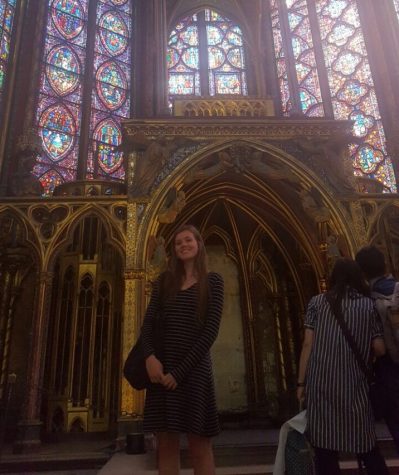
Sophomore studying international relations and art history.
Goes crazy for cereal and old cathedrals.
Areas of Interest: voter suppression and disenfranchisement,...



